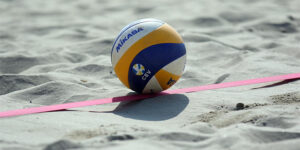
Let’s admit it: Christmas disasters are not new to Filipinos. First of all, our country is located right smack in the middle of the typhoon belt. Secondly, because we have one of the longest Christmas seasons in the world, which also happens to coincide with peak storm season, it is almost a given that a part of the poor Philippines gets hit with a powerful storm every year at around this time.
It happens almost every year so our government should’ve known by now that when it comes to powerful Christmas season storms in the Philippines, it’s not a matter of if, it’s only a matter of when and where.
Super typhoon Yolanda taught us the importance of advance warnings and the dangers of storm surges. The floods of Ondoy made rubber boats de rigueur among local government units. To be fair to our government officials, our typhoon preparation and response did improve over the years. We definitely have better warning systems, upgraded evacuation centers, and more capable equipment now.
However, despite the improvements we have made, the effects of climate change have also made typhoons even more powerful than before. With the world still unable to muster the collective effort required to roll back the effects of global warming, we can expect storms, floods and other extreme weather events to become even more violent in the coming years.
After seeing what Typhoon Odette did to southern Negros and even the urban center of Cebu, it has become pretty obvious that we still aren’t as prepared as we should be. We may have readied preemptive evacuations, evacuation centers and food packs for those predicted to be directly affected by the typhoon, our ability to quickly and efficiently recover from such expected catastrophes is still almost non-existent.
Our society has evolved to become too dependent on electric power. If power goes out, we don’t only lose electricity, we also lose water and communications, which practically throws everyone back into the stone age.
Allow me to introduce my post-Odette Christmas Disaster Wish List.
Gensets – LGUs need access to gensets of all sizes in case of typhoons like Odette. Unless local governments can require their local water district to have back power, government must have a stock of big backup gensets for the water pumps of water districts prepositioned for quick transport and deployment to ensure water supply does not disappear. Aside from that, an army of small barangay-level gensets for rescue operations and community charging and has to be readily available. Additionally, small gensets will also need to be made available for the cell sites and towers that survive the typhoon so communications can be temporarily restored where possible.
Satellite phones – we have become so used to being always connected because of the ubiquitous internet that even government units have forgotten the importance of sat phones and even VHF radios in disaster situations. While backup gensets for the cellular sites that survive can partially restore communications, there needs to be a system in place that isn’t dependent on the cellular network that can be crippled or wiped out by powerful storms. Sat phones and VHF radios can fill that gap and allow rescue and relief operations to continue unhampered. Prepositioning such equipment ahead of powerful typhoons can make our communities more disaster resilient.
Mobile cell sites –government and the telecom industry should have a contingency plan to provide temporary communications after typhoons. Mobile battery or genset powered cell sites that can prop up a damaged network and allow rescue teams and affected citizens to get in touch with each other shouldn’t be too much to ask.
Mobile water purifying stations – the drinking water crisis that followed Odette could’ve been prevented if we were prepared to fill the temporary gaps caused by damaged infrastructure. We shouldn’t have to send thousands of gallons of drinking water all the way to Cebu if water purifying options had been available. Actually, if you come to think of it, the easiest way to purify water is to adequately boil it. We have just become used to multi-stage purified water with reverse osmosis and activated charcoal what not so that kind of water had to be trucked to disaster areas. That wouldn’t have to be necessary if government had been able to preposition and provide mobile water purifying stations.
Just as we adapted to the challenges posed by previous powerful typhoons such as Yolanda and Ondoy, so should we adapt to Odette. My disaster equipment wish list is full of expensive equipment that towns and cities certainly cannot around in storage just in case they need it, however there should be a warehouse of such tools and equipment for every province or region, especially the typhoon prone ones. We may now be more prepared for typhoons but our ability to recover as quickly as possible has not yet improved. After we recover from the destruction caused by Odette, that should be something our government should turn its attention to.*







